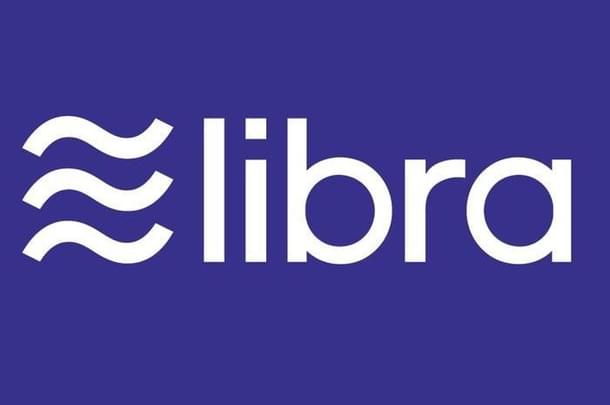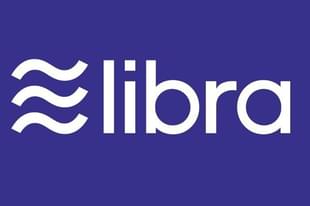Business
Explained: Facebook’s Libra, The New Global Cryptocurrency
Tushar Gupta
Jun 20, 2019, 03:48 PM | Updated 03:48 PM IST
Save & read from anywhere!
Bookmark stories for easy access on any device or the Swarajya app.


After enabling social inclusion digitally on a global level, Facebook has now come up with a plan for financial inclusion. In an announcement yesterday (19 June), the company released its plan for a new global cryptocurrency called Libra. With the aim of delivering ‘stable virtual money’ to a billion people outside the banking purview, Facebook aims to use Libra to facilitate seamless transfer of money along with other financial services across the globe.
The Inspiration Behind the Libra Cryptocurrency
Two words: financial empowerment.
In a white paper released on Tuesday (18 June), the company has described Libra as an enabler for a simple global currency and financial infrastructure that empowers billions across the globe. Banking on the rising digital connectivity since the 2010s, Libra will help people with access to the financial ecosystem.
As per the paper, over 1.7 billion adults, globally, have no access to the financial system or a traditional bank, even though a billion of them have a mobile phone and about one-third of them have access to the Internet.
What has also inspired the development of this cryptocurrency is the need to offer seamless services to people across the globe, thus eliminating the cost people have to pay in order to access traditional financial services across borders.
For the ones who lack access to banks and financial institutions due to geography, socio-economic status, and the lack of documentation, Libra would serve as the financial touchpoint for an array of services.
The principles that drive Libra are that of cheap capital, giving people the right to control their money, create economic opportunities and commercial chains across the globe, engage people via a decentralised form of governance, and encourage financial inclusion.
It’s a proposed financial order without the prevailing borders.
What Does Facebook Bring To The Table With Libra?
As stated above, Facebook is looking to replicate its success in social networking in the realm of finance. With Libra, Facebook brings an idea to the table.
The idea focusses on moving money across nations in an easy and cost-effective manner. The movement of money is proposed to be safer and easier than sending a text over Messenger or an image over WhatsApp.
Libra comes with three components. One, it is built on a secure, scalable, and dependable blockchain. Two, unlike other cryptocurrencies, it is backed by a reserve of assets that give it an intrinsic value. Three, it is governed by an independent “Libra Association”, which will also be responsible for the development of its ecosystem.
The backing of Libra by a reserve of real assets is meant to inspire confidence amongst people when it comes to its usage, storage, and adoption.
When it comes to the Libra Association, it shall be headquartered in Geneva, Switzerland. The members will come from different geographies, sectors, and institutions. As of now, the Libra association has over 25 members including Mastercard, PayPal, Visa, eBay, Facebook, Lyft, Uber, Spotify AB, Coinbase, Thrive Capital, Kiva, Vodafone, and Mercy Corps.
Thus, already, from payment companies to telecommunications, and from tech marketplaces to venture capital firms, all are starting to come onboard the Libra Association. By the end of Q2 next year (2020), the association aims to take the member count to beyond 100.
Facebook, most importantly, also brings decentralisation of its services to the table in the form of Calibra, a subsidiary that shall ensure separation between the social and financial data.
The Libra Blockchain And Its Nature
A blockchain can be described as ‘permissioned’ where access is specifically granted to run a validator node. In contrast, a ‘permissionless’ blockchain is one where anyone meeting minimum technical requirements can run a validator node. To begin with, Libra will be a ‘permissioned’ blockchain. However, the long-term ambition is to make it ‘permissionless’.
The blockchain would be open to everyone, that is, a consumer, developer, or entrepreneur, for them to use the network and develop products that are a part of the network.
The blockchain, in its entirety, serves three major requirements. One, it offers the ability to scale upto a billion accounts and more. Two, it offers security and safety of funds and other financial data, and three, it comes with enough flexibility to factor in the future innovations in the financial sector.
What Shall Drive The Libra Blockchain?
One, a new programming language called ‘Move’. Designed to prevent the cloning of assets, it ensures that digital assets follow the properties of physical assets, that is, one digital asset shall only have a single owner. Given the blockchain aims to host over a billion people, this function is indispensable.
The Move language also facilitates a financial verification system for validating debit and credit from sender and receiver accounts. All in all, the language will be critical to the evolution of the blockchain protocol and other financial innovations that are added to the network in the future.
Two, to facilitate agreement among all validator nodes on the transactions to be executed and the order in which they are executed, the Libra blockchain has adopted the BFT approach by using the LibraBFT consensus protocol.
Here’s why this is important. Assuming some validator nodes are compromised or fail, the inclusion of the BFT approach ensures that the network integrity is retained.
Three, data structures will be crucial for the secure storage of data. With Merkel trees, any change to existing data will be detected. Also, unlike other blockchains that are viewed as multiple blocks or a collection of blocks, the Libra blockchain will be viewed as a single structure.
Thus, if any applications are added to the network, they would have the freedom to read data from any point in time, ensuring a high level of data integrity.
What Makes Libra Different From Other Cryptocurrencies?
Apart from the technical intricacies, what separates Libra from other cryptocurrencies is the fact that it will be backed by a reserve of real assets. Thus, owners of the Libra currency will be able to rest assured that they can anytime exchange their digital currency against a local one at prevailing exchange rates.
The reserves will include low-volatility assets including bank deposits and short-term government securities in currencies from reputable central banks. The interest from the reserve assets shall be invested in the maintenance of the system, ensure low-transaction costs, and pay off dividends to early investors.
It must be noted that the value of Libra will fluctuate in any local currency depending upon the underlying factors. However, one should not expect a case like Venezuela or 1920s’ Germany in terms of exchange rates, as the reserve assets are being chosen with minimum volatility as a priority.
What Shall The Libra Association Be Responsible For?
One, it shall facilitate the operation of the Libra blockchain. Two, it shall look to coordinate the agreement amongst its stakeholders, that is, it will ensure that the promotion, expansion, and development of the network’s validator node go on unhindered.
Three, it shall manage the Libra Reserve. This way, it will be directly responsible for the stability of the currency. Four, it alone shall be responsible to mint or destroy the currency units, depending upon the flow of assets against the currency.
Lastly, it will push the network towards decentralisation and facilitate a change in the nature of the blockchain from ‘permissioned’ to ‘permissionless’ over a period of few years. It will also be responsible to ensure the seamless inclusion of developers, consumers, and other business interests willing to be a part of the network.
What’s Next For The Libra Cryptocurrency?
One, elaborate feedback will be gathered from the community in order to prepare for the roll-out by the first half of 2020. Two, APIs will be created to ensure interaction between users and the blockchain network. Three, extensive testing of the blockchain will be carried out, and lastly, the ‘Move’ language will be developed in order to ensure smooth onboarding of third parties.
Meanwhile, the Libra Association will focus on establishing a group of global institutional custodians for the reserve, work out a mechanism to ensure high-transparency and auditability for the functioning of the reserve, and design policies that would govern the reserve basket.
The Libra Association will also look to extend its membership beyond 100 groups, companies, and other institutions, and have an administrative structure in place to take things forward.
The Elephant In The Room: Privacy
To put it mildly, not a lot of people trust Facebook after the drama around Cambridge Analytica, the reports about censoring of opinion amongst the Republicans in the United States, and Zuckerberg’s infamous appearance before the European Union (EU) leaders last year.
The early response to Facebook’s Libra has been between lukewarm and outright negative. One of the major reasons is that there is no elaboration on how the separation between social and financial data will work and if there would be any safeguards against the information being collectively used in the future.
Clearly, the idea behind Libra is far more evolved than that of Bitcoin and closer to that of Western Union. Yet, even if the system does promise seamless international payments, it will raise a lot of questions pertaining to money laundering and similar subjects.
What will drive a lot of users against Libra is the possibility of their social and financial data being under one company, even if one of them is a subsidiary of the other. This may well result in a social credit system, similar to what has been in existence in China.
Facebook’s idea of financial inclusion is universal but so is that of privacy, and this is where it shall find its biggest challenge.
Tushar is a senior-sub-editor at Swarajya. He tweets at @Tushar15_





